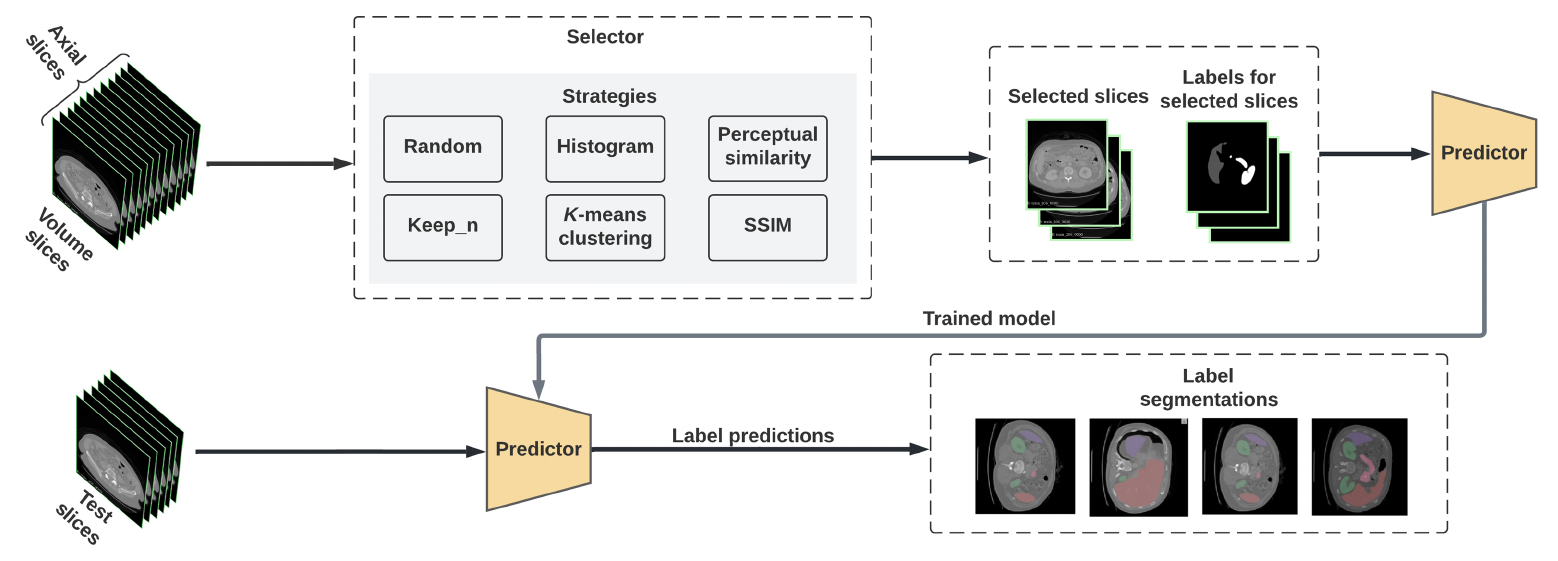Medical volume segmentation by overfitting sparsely annotated data
Journal of Medical Imaging 2023
Abstract
Purpose Semantic segmentation is one of the most significant tasks in medical image computing, whereby deep neural networks have shown great success. Unfortunately, supervised approaches are very data-intensive, and obtaining reliable annotations is time-consuming and expensive. Sparsely labeled approaches, such as bounding boxes, have shown some success in reducing the annotation time. However, in 3D volume data, each slice must still be manually labeled. Approach We evaluate approaches that reduce the annotation effort by reducing the number of slices that need to be labeled in a 3D volume. In a two-step process, a similarity metric is used to select slices that should be annotated by a trained radiologist. In the second step, a predictor is used to predict the segmentation mask for the rest of the slices. We evaluate different combinations of selectors and predictors on medical CT and MRI volumes. Thus we can determine that combination works best, and how far slice annotations can be reduced. Results Our results show that for instance for the Medical Segmentation Decathlon—heart dataset, some selector, and predictor combinations allow for a Dice score 0.969 when only annotating 20% of slices per volume. Experiments on other datasets show a similarly positive trend. Conclusions We evaluate a method that supports experts during the labeling of 3D medical volumes. Our approach makes it possible to drastically reduce the number of slices that need to be manually labeled. We present a recommendation in which selector predictor combination to use for different tasks and goals.
BibTeX
@article{payer2023medical,
title={Medical volume segmentation by overfitting sparsely annotated data},
author={Payer, Tristan and Nizamani, Faraz and Beer, Meinrad and G{\"o}tz, Michael and Ropinski, Timo},
year={2023},
journal={Journal of Medical Imaging},
volume={10},
issue={4},
doi={10.1117/1.JMI.10.4.044007}
}

